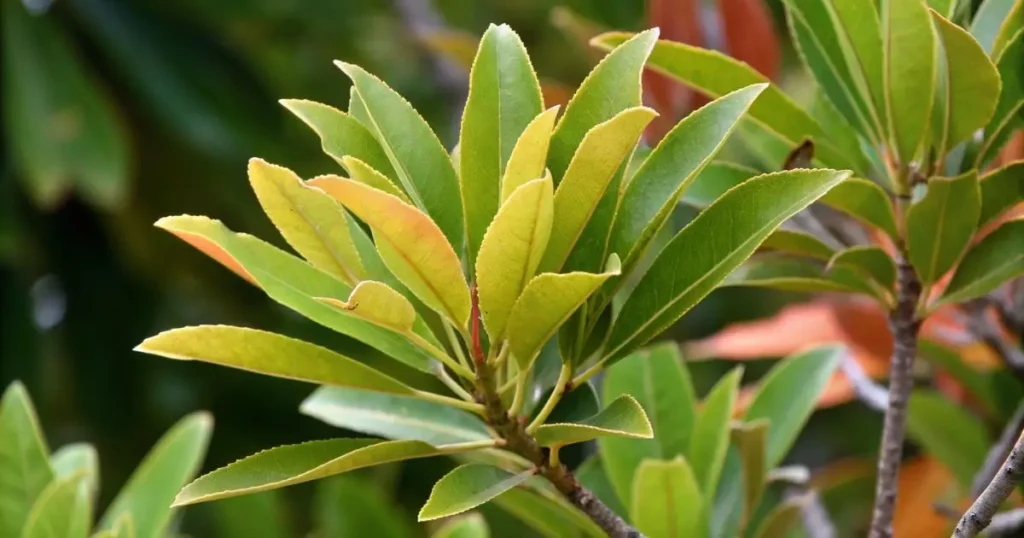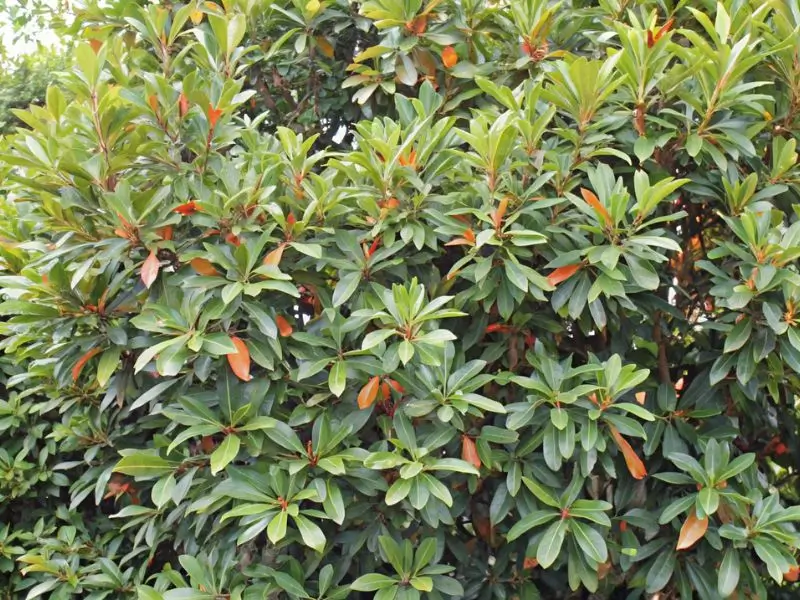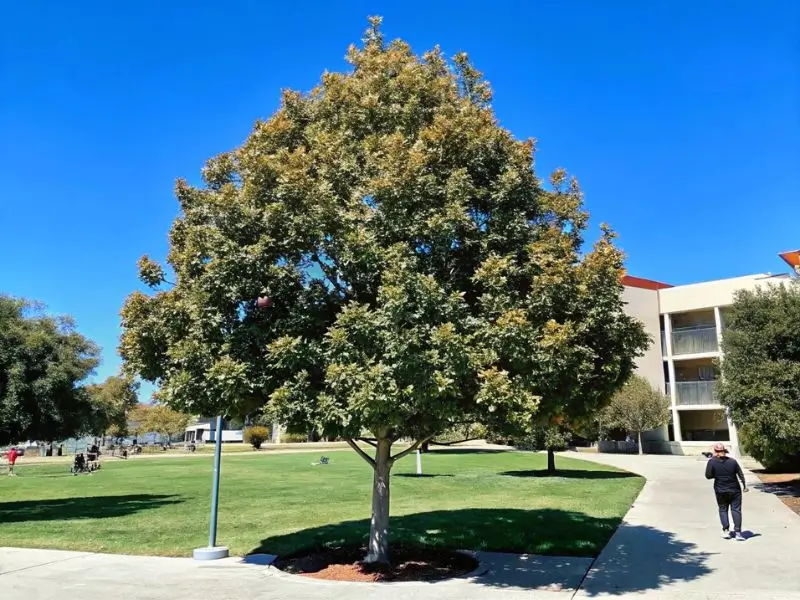
Landscaping can feel daunting when searching for the perfect focal tree. Japanese blueberry trees, also known as Elaeocarpus Decipiens, promise evergreen foliage and modest shade. Yet questions loom: Are they messy, do they drop loads of berries, and will you spend weekends sweeping? This post shares real-life pointers, covering pros, cons, and quick upkeep tips. Discover if Japanese blueberry trees earn a spot in your yard. Enjoy minimal effort overall.
Table of Contents
Overview of Japanese Blueberry Trees
Introduction to Elaeocarpus Decipiens
I first heard about these trees from a neighbor who replaced a scraggly hedge with a sleek evergreen. It immediately sparked my own question: Are Japanese blueberry trees messy? I wanted to know if those glossy leaves meant constant yard work. Turns out, they can grow up to 20 or 30 feet tall—nice if you want moderate shade. They’re pretty fond of warm climates and direct sunshine.
When it comes to Japanese Blueberry Tree Care, you’ll find they enjoy well-drained soil and a bit of consistent moisture. I once underwatered mine for months, and it survived like a champ. Still, if you’re like me, you’ll be curious about possible fruit stains or leaf piles.
Popularity in Ornamental Landscaping
Folks love their:
- Glossy, oval leaves that deepen in color
- Tall yet columnar shape, tidy for smaller spaces
- Evergreen flair that doesn’t fade in the cold
Even so, I kept asking, “Are Japanese blueberry trees messy?” because I didn’t want to spend weekends sweeping. Let’s see how that turned out.
Growth Habits and Characteristics
Natural Growing Conditions
Many people wonder, Are Japanese blueberry trees messy? especially if they live in regions with heavy rains. These trees do best in mild-winter zones, handling hot summers as long as they receive regular watering. My friend in Florida waters his twice a week, no drama there.
If your soil’s jam-packed with clay, add some organic matter to support better drainage. With good soil, they usually stand strong against moderate winds. One summer, we had a few storms roll through, and I only found a handful of leaves on the ground—so not too bad.
Typical Size, Shape, and Leaf Structure
In terms of leaf shedding patterns, Japanese blueberry trees generally lose fewer leaves than many large ornamentals. The leaves start off bronzy and switch to deep green. Because the canopy stays somewhat slender, you won’t have the entire yard overshadowed.
Personally, I love the sleek shape—it’s eye candy for me. But, Are Japanese blueberry trees messy? I’d say they’re not spotless, yet definitely less messy than an oak dropping acorns or a magnolia unloading giant leaves. Let’s dig deeper to confirm.
Are Japanese blueberry trees messy? Debunking the Myths

Fruit Drop and Leaf Litter
Time to jump right into it: Are Japanese blueberry trees messy? Yes, they drop small, dark berries that can stain walkways. If those berries accumulate on a concrete patio, you might see some smudges. But how bad can it get?
- Leaf Litter: Fairly moderate—nothing crazy
- Fruit Drop: Occurs in clusters, mostly during warm months
- Cleanup: A broom or a quick spray with a hose usually sorts it out
I saw a few mottled berry marks on my pavers, but it wasn’t an every-day thing. In comparison to trees like the live oak that dumps leaves galore, Japanese blueberry sits way lower on the messiness scale.
Understanding Seasonal Changes
I do see the most fruit drop in late summer. That’s when I probably ask myself again, Are Japanese blueberry trees messy? But with a quick five-minute sweep, I’m done. If your goal is a spotless yard, you might fuss a little, but it’s rarely a dealbreaker.
My yard stays neat, minus those few weeks when the fruit peaks and falls. Once you’ve gone through a season or two, you’ll realize it’s pretty manageable. If you’re drawn to these evergreens for their style, the mild mess is worth the payoff.
Key Factors Influencing Tree Cleanliness
Soil, Fertilization, and Watering
If leaf drop seems excessive, it’s often tied to soil nutrients or odd watering. Aligning everything helps me answer, Are Japanese blueberry trees messy? in a positive way. Key points:
- Fertilize with a balanced, slow-release mix in spring
- Keep soil moist but not soggy
- Check moisture levels weekly, especially in peak heat
A balanced fertilizer once a year keeps the leaves lush, so there’s less random shedding. Curious about how tall yours might get? Check out How Big Does a Japanese Blueberry Tree Get? for details on mature heights.
Environmental Considerations
Sudden storms or cold snaps can shake off leaves. After one big windstorm, I asked, Are Japanese blueberry trees messy? again because I noticed extra leaves. That was mostly weather-driven, though. Once conditions stabilized, the tree bounced back fine. A healthy tree usually means less stray debris anyway.
Maintenance Tips to Minimize Mess
Pruning and Cleaning Strategies
Light pruning each year helps remove fruit-bearing branches. If you wonder, Are Japanese blueberry trees messy? while clipping, here’s how to stay on top:
- Remove crossing or dead branches
- Prune in late winter or spring
- Keep tools clean to avoid disease
I use a leaf blower to corral fallen berries. That’s quick and practical. For more general plant health tips, pop over to the U.S. Forest Service site.
Landscaping Best Practices
People who worry—Are Japanese blueberry trees messy?—can add a mulch circle or stepping stones under the canopy to catch berries. Fill it with decorative stones or mulch, so cleanup is a breeze. A quick rake or blower session keeps the small berry pile from becoming a wide mess. It’s a super-easy trick that benefits both appearance and convenience.
Comparing Japanese Blueberry Trees to Similar Species

Other Ornamental Trees With Minimal Mess
I’ve grown or seen a few alternatives:
- Magnolias: Large leaves, heavy blooms that can clutter the yard
- Holly trees: Spiky leaves, bright berries that can poke your feet
- Crape myrtle: Beautiful blooms but lots of dropped petals
I frequently compare them with Japanese blueberry and think, Are Japanese blueberry trees messy? They end up on the moderate-to-clean side. Yes, you’ll get some fruit, but magnolias shed more and crape myrtles rain petals like confetti. If you need a minimal litter landscape, Japanese blueberry trees are a comfortable fit.
Weighing Pros and Cons
Quick highlights:Pros
- Evergreen beauty for year-round color
- Medium shade that doesn’t dominate your yard
- Good pest and disease resistance
- A neat, uniform shape
Cons
- Berry stains can happen if not cleaned promptly
- Will drop leaves during certain seasonal changes
- Needs a warm climate and steady watering
Even with a few drawbacks, I still love them. Whenever I question, Are Japanese blueberry trees messy? I recall how small the cleanup is compared to other species. For me, that’s worth it.
Common Problems and Challenges
Pests and Diseases
No plant is invincible. Scale insects or aphids may appear here or there. If these go unchecked, leaf drop can increase. That’s when you might fret, Are Japanese blueberry trees messy? because a stressed tree throws off debris. A horticultural oil spray usually tackles scale.
Root rot can show up if soil stays waterlogged. Watch your watering schedule. If it feels soggy days after watering, cut back or improve drainage. Keep an eye on drooping or discolored leaves—that often indicates an issue.
Tips for Avoiding Mess-Related Issues
- Grab fallen berries fast to avoid stains
- Inspect foliage monthly for pest signs
- Cut off any heavily pest-infested branches
- Adjust watering or placement if leaves keep dropping
Stay ahead of minor issues, and you’ll keep the tree healthy—and the yard tidier overall.
Frequently Asked Questions (FAQ)
Do Japanese blueberry trees Attract Pests?
Sometimes, scale or aphids might appear, but not typically in large numbers. A healthy tree loses fewer leaves and keeps the yard cleaner.
How Often Do They Drop Leaves or Fruit?
They’re evergreen, so leaf drop remains light throughout the year. Some older leaves shed in late winter or early spring. Berries usually drop late summer or early fall.
Can I Grow These Trees in a Small Yard?
Sure can. Their somewhat columnar shape suits tighter spaces. Prune routinely to prevent overcrowding and maintain a neat form.
What Are Some Alternatives to Japanese Blueberry?
If you still wonder, Are Japanese blueberry trees messy? you might compare them with crape myrtles or small hollies. Each has its own debris quirks, so choose based on personal style and maintenance comfort.
Conclusion—Final Thoughts on the Messiness of Japanese Blueberry Trees

I keep revisiting the question, Are Japanese blueberry trees messy? and I’d place them in the moderately messy category—much less demanding than many other ornamentals. Sure, they drop small fruit and a few leaves, but they offer evergreen beauty year-round.With consistent watering, minor pruning, and brief cleanup, they can serve as a handsome focal point in your yard. Here’s why I’m into them:
- Evergreen color every season
- Medium shade without blocking the sky
- Decent pest and disease resistance
If you have a warm climate, consider these quick pointers:
- Feed them in spring with a balanced fertilizer
- Prune gently to reduce fruit buildup
- Stay on top of fallen berries so they don’t leave marks
I’ll happily do a bit of cleanup for that classic look. So if you keep asking, “Are Japanese blueberry trees messy?” don’t stress. They aren’t perfectly spotless, but they’re definitely among the more reliable options for anyone comfortable with light yard chores.
Extra Tips for Success
- Spacing
- Plant them at least 4 to 6 feet away from structures. This setup reduces any chance of branches scratching windows while also allowing enough airflow around the trunk.
- Irrigation
- If you have an automatic sprinkler system, make sure it’s not overwatering. A soggy root zone can lead to more leaf drop, spurring the question yet again, Are Japanese blueberry trees messy? Balanced moisture is your friend.
- Watch for Heat Stress
- In extremely hot regions—like parts of Texas or Arizona—these trees might need a bit of afternoon shade. Overly harsh sun can lead to scorched leaves, which eventually drop.
- Mulching Strategy
- Mulch helps conserve moisture but don’t pile it against the trunk. An overly thick mulch mound can trap moisture and encourage pests.
With a few thoughtful steps, the overall cleanup remains light. And you’ll reap the benefits of gorgeous, evergreen foliage all year round.

1 thought on “Are Japanese blueberry trees messy?”
Comments are closed.